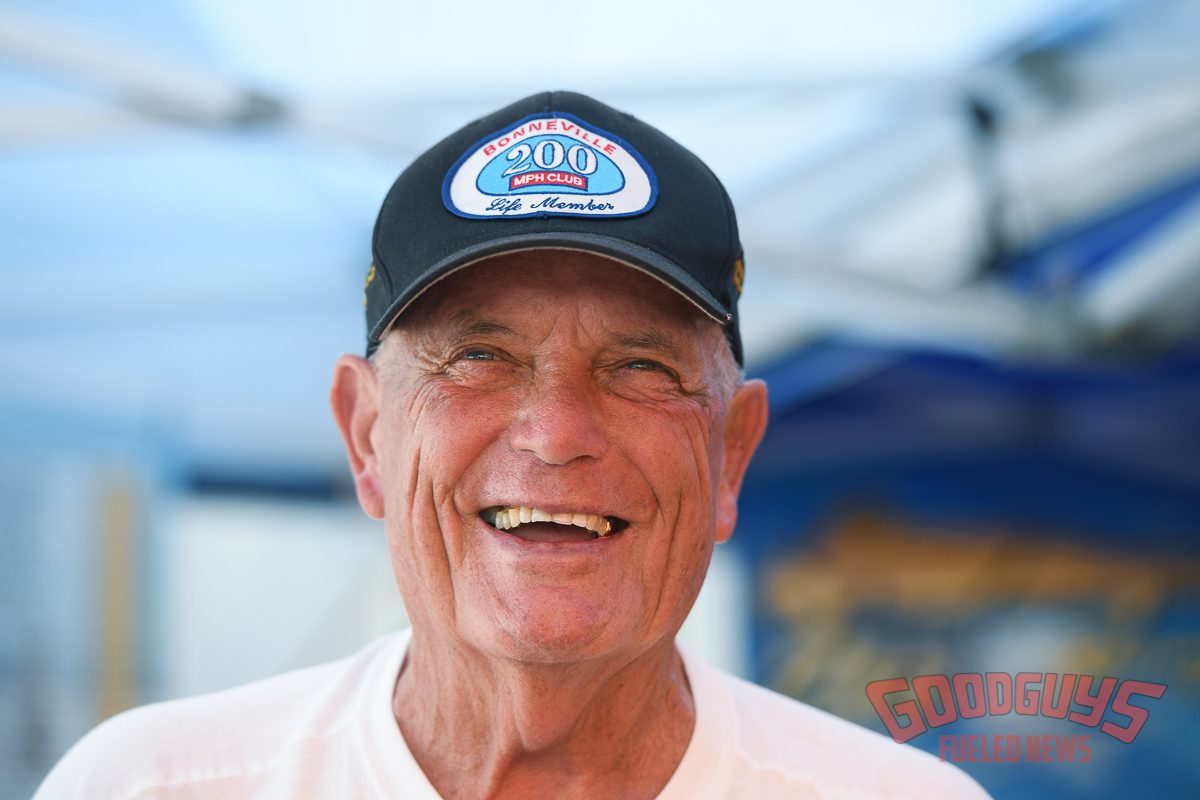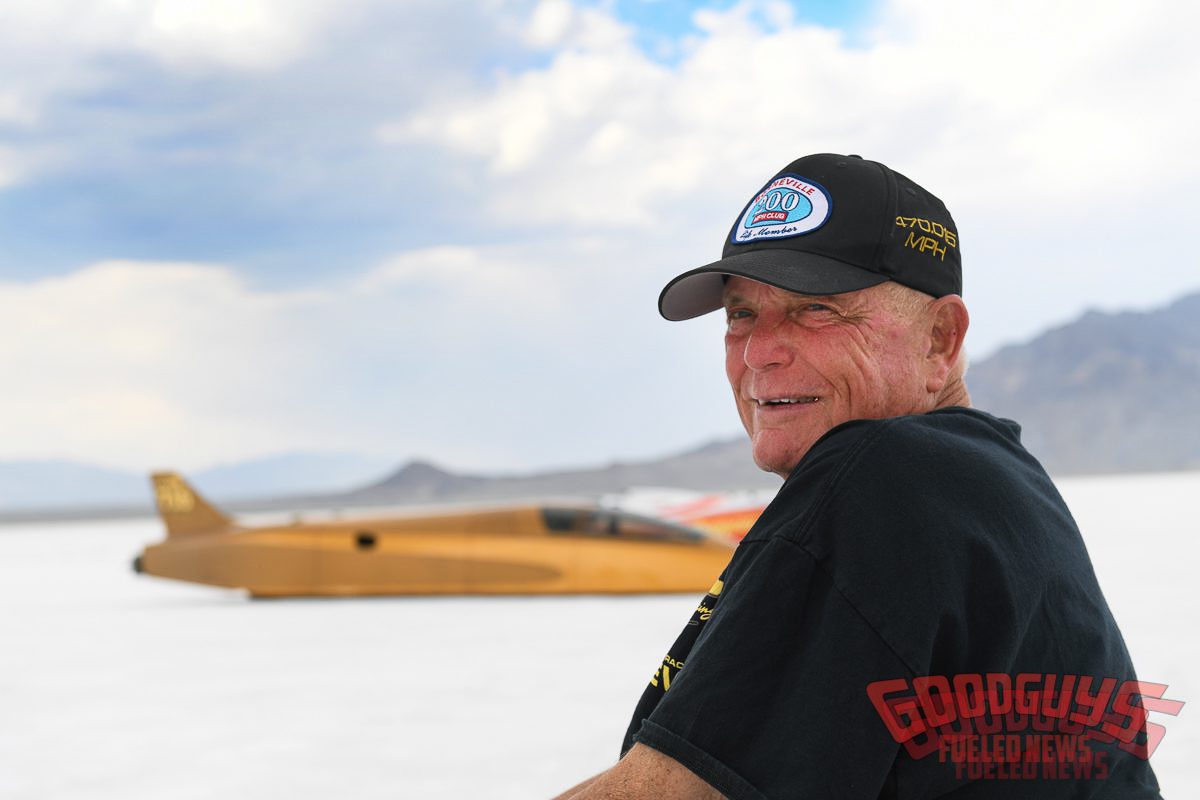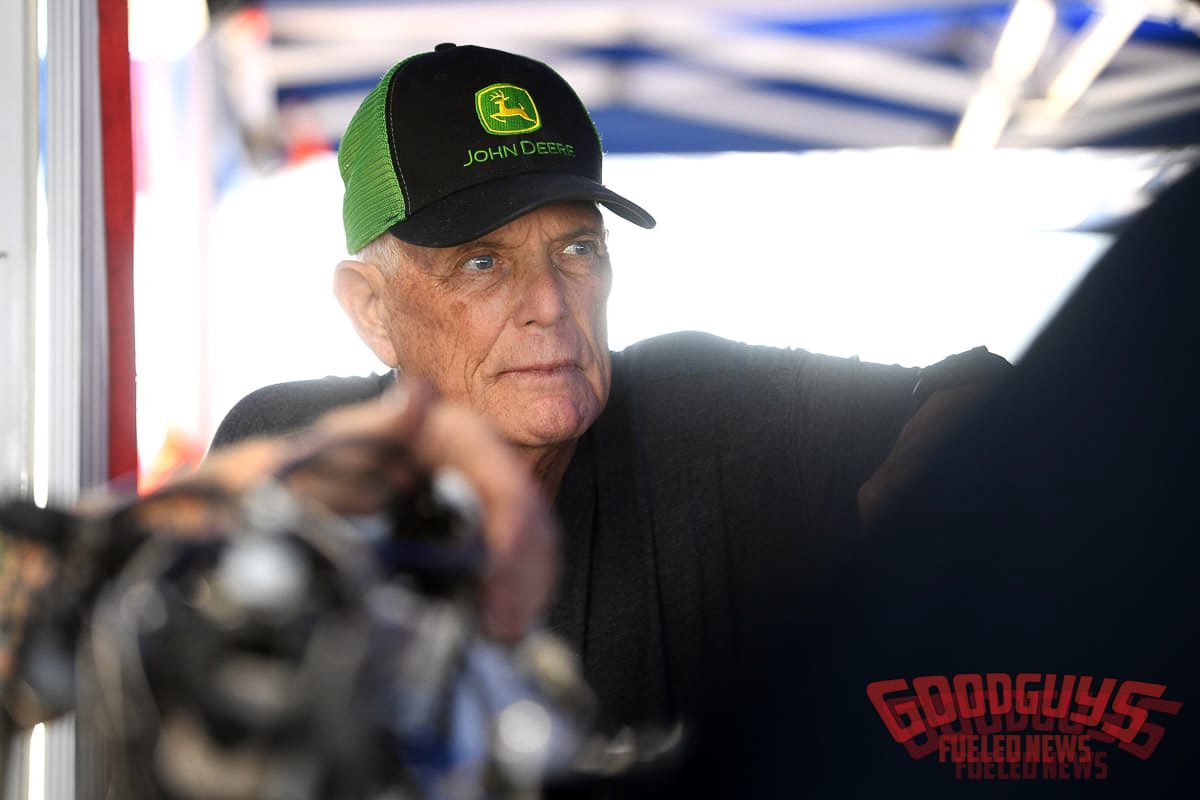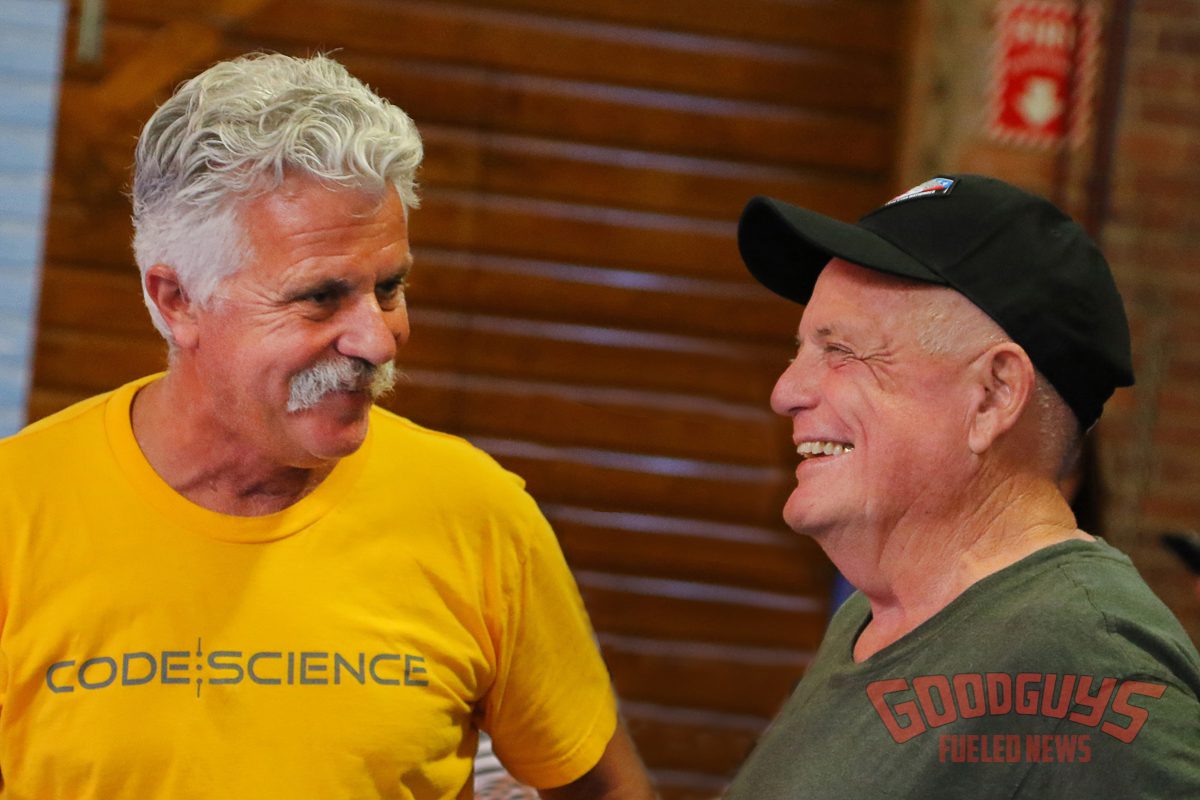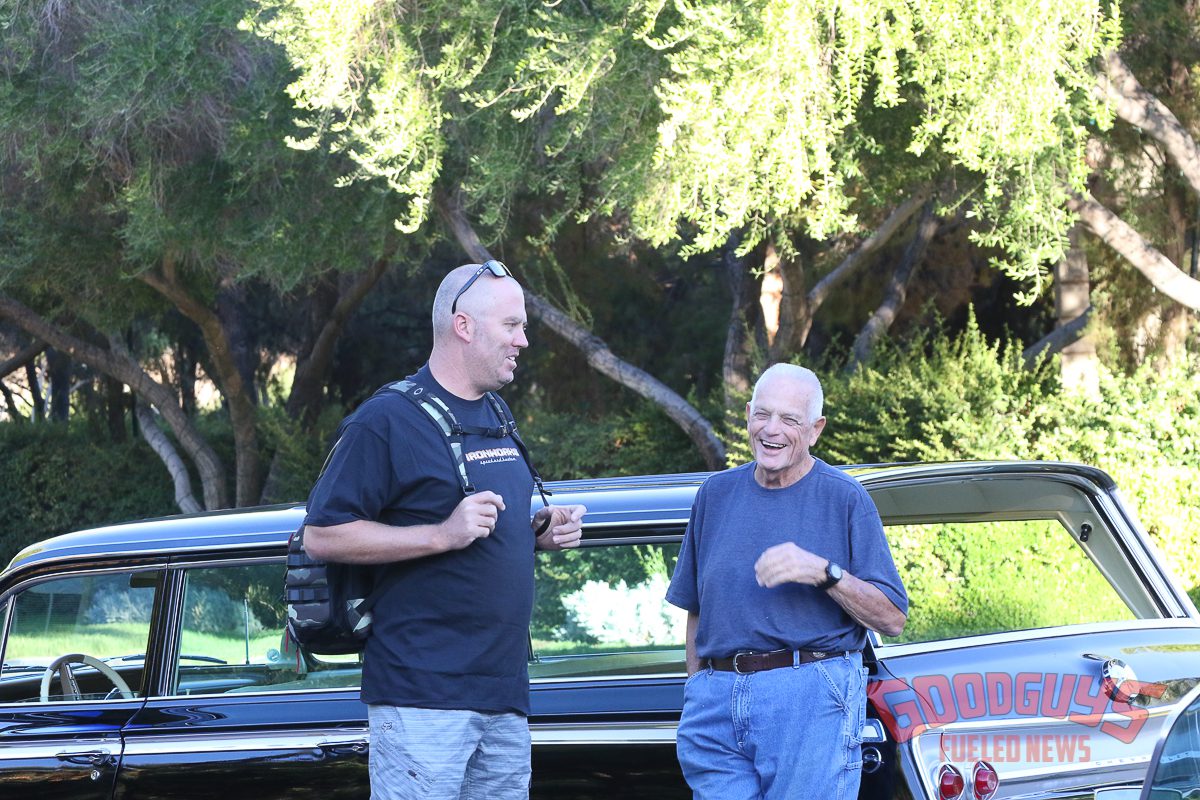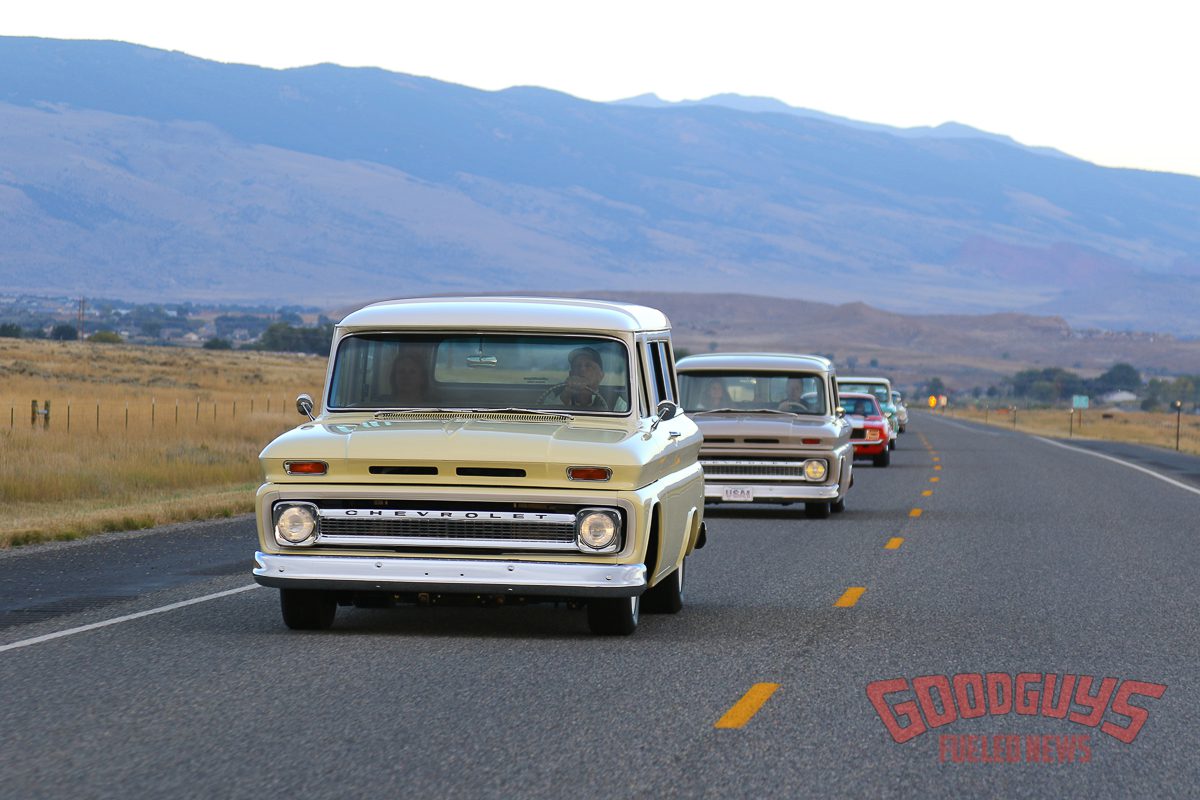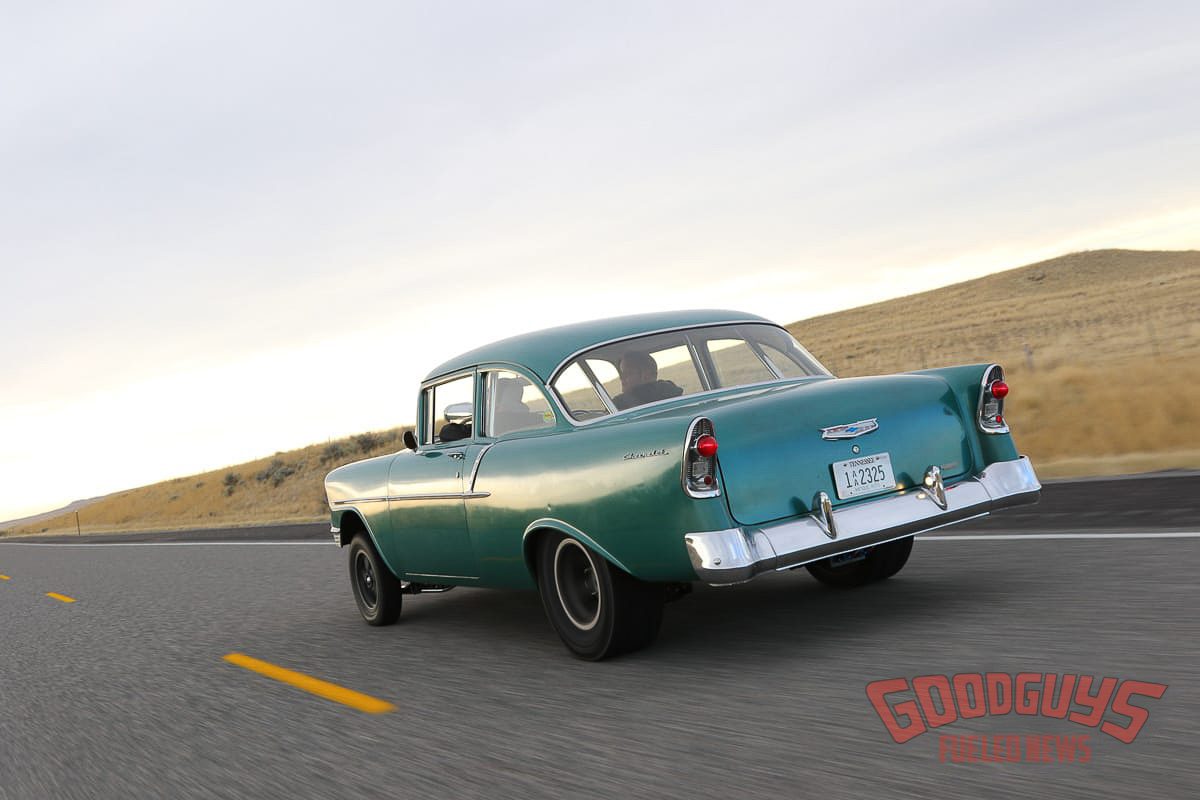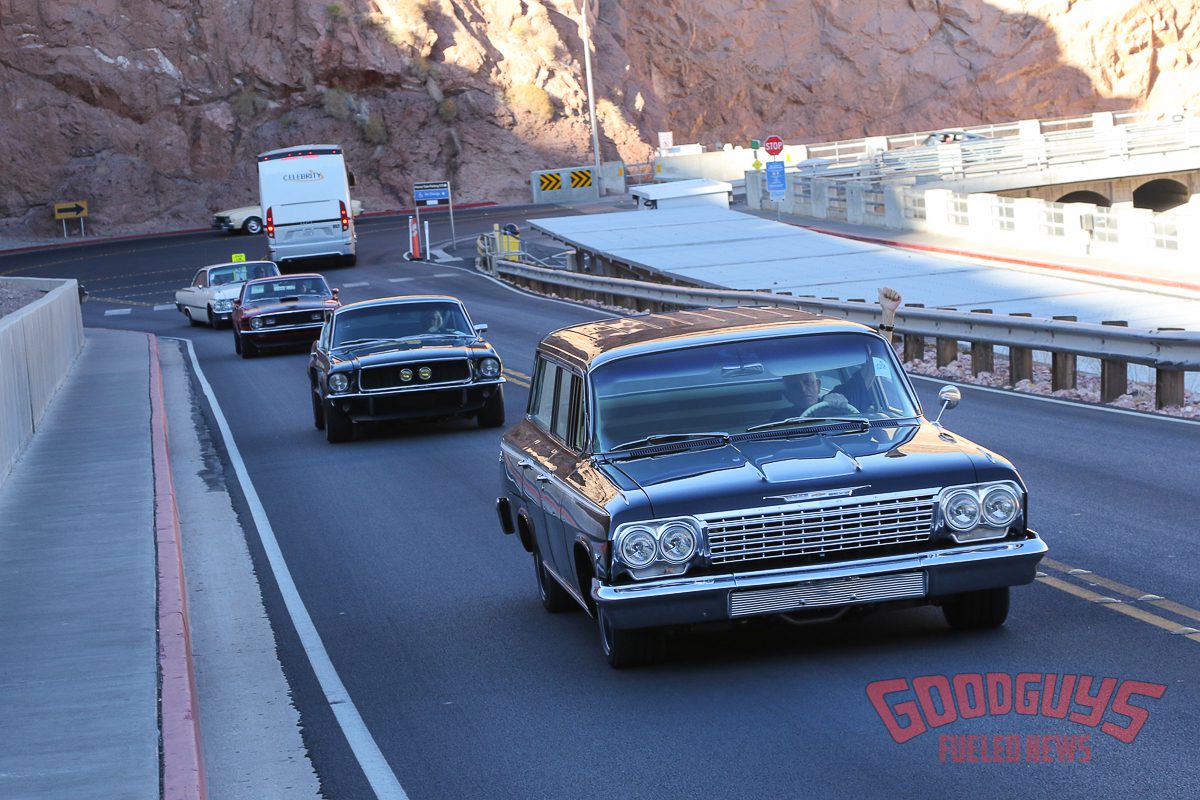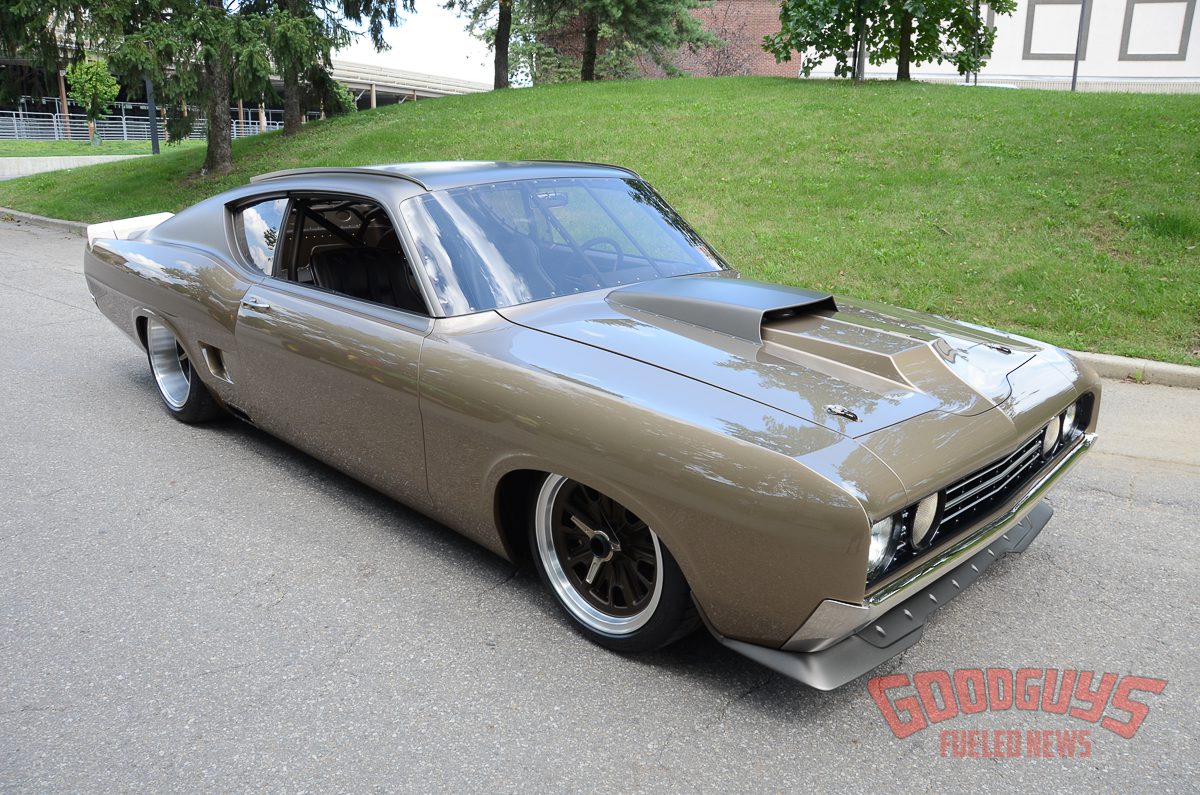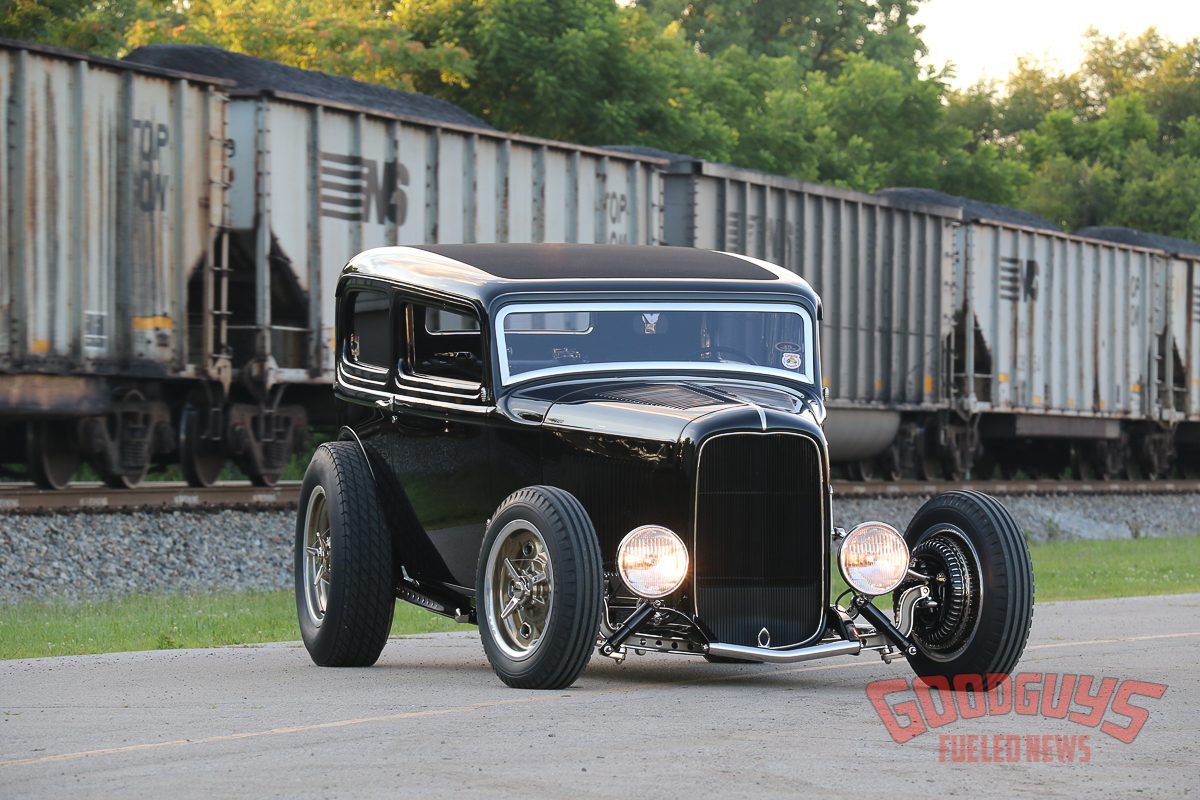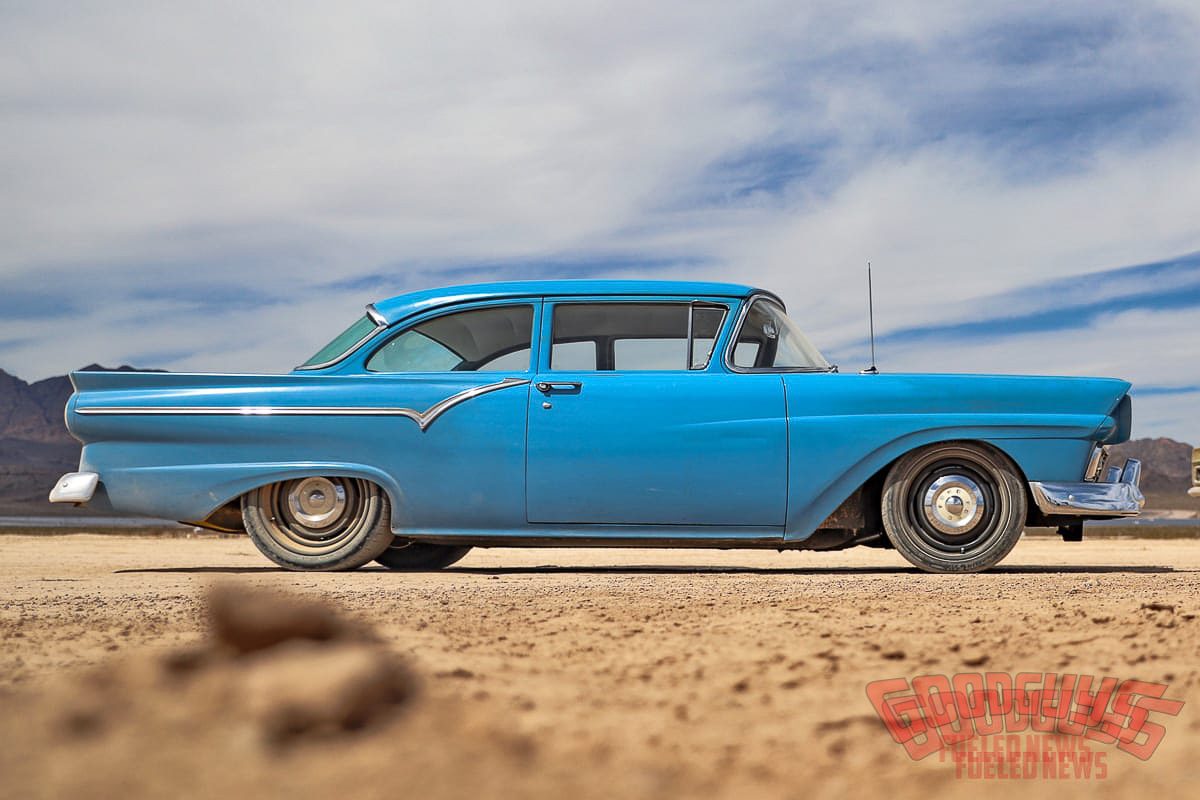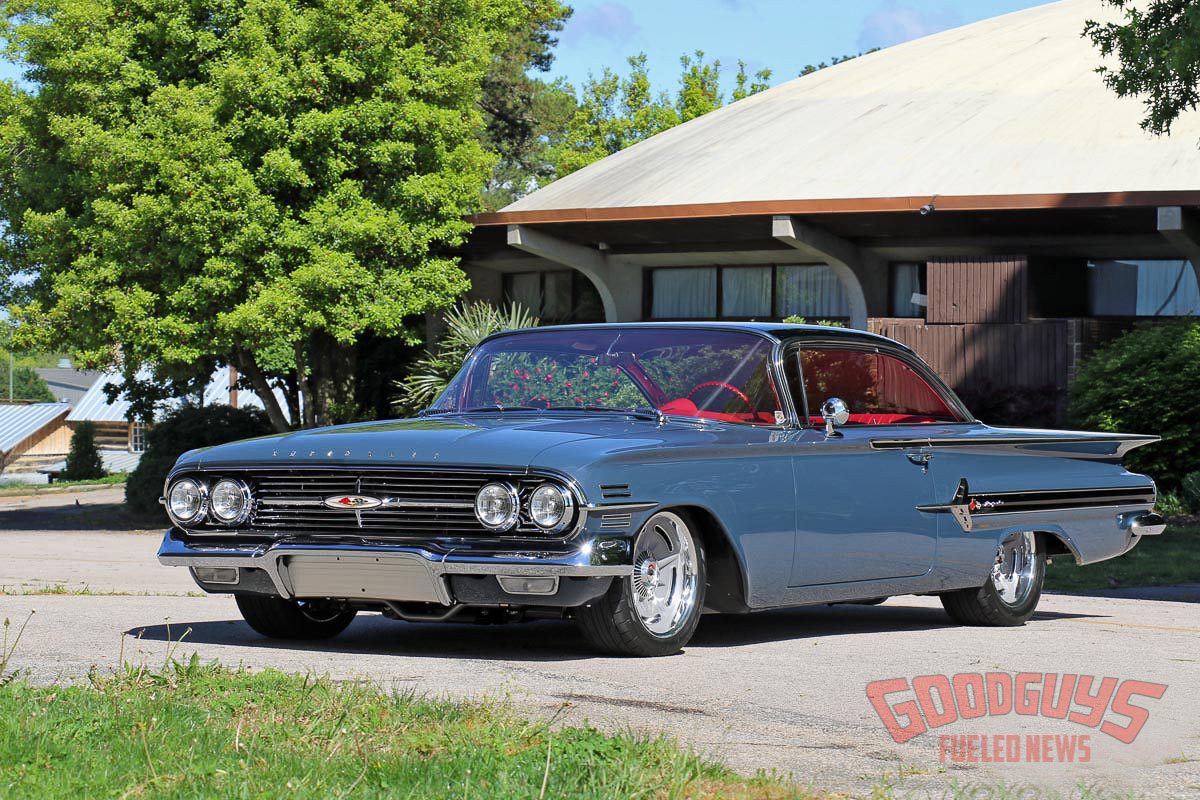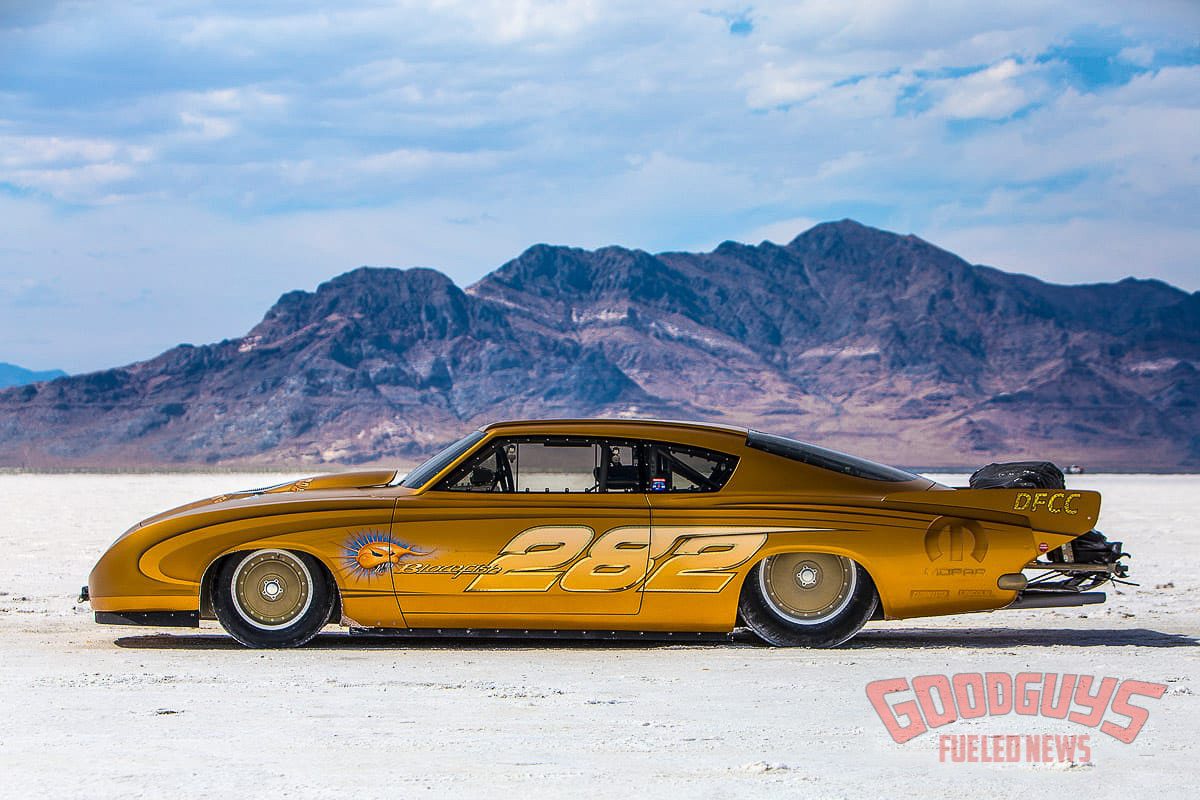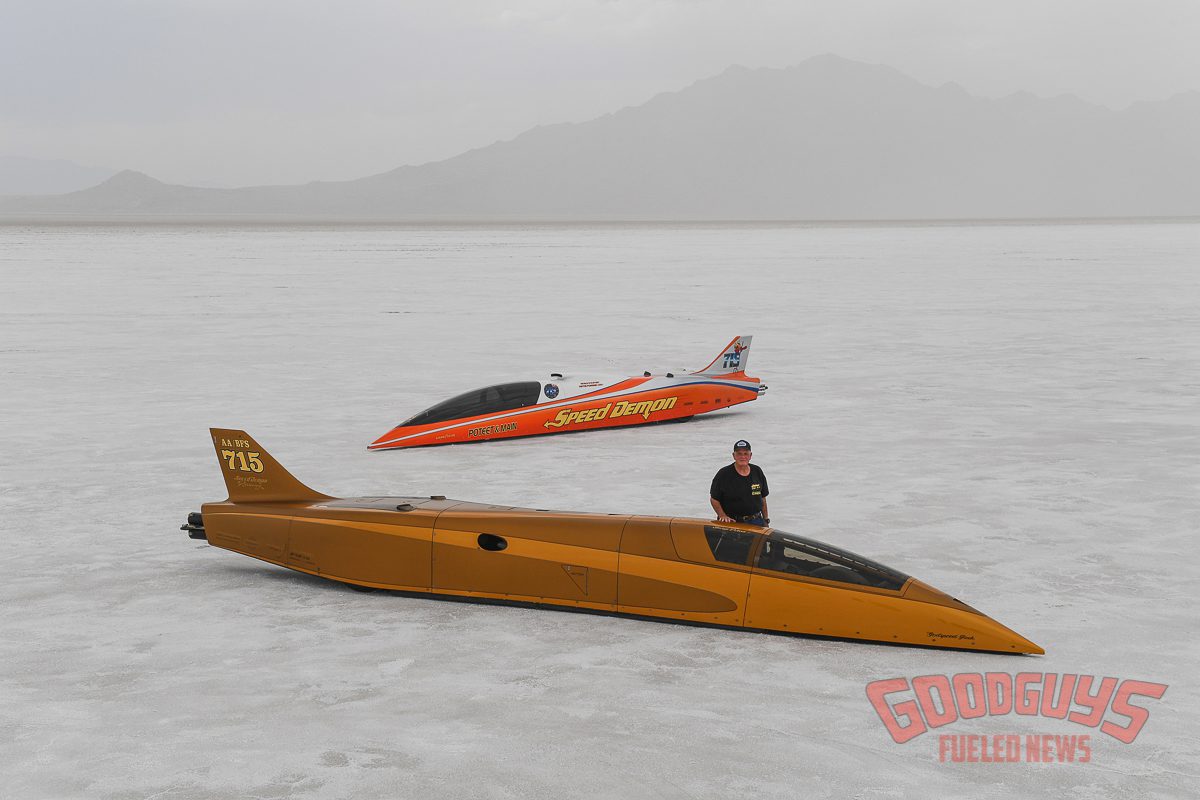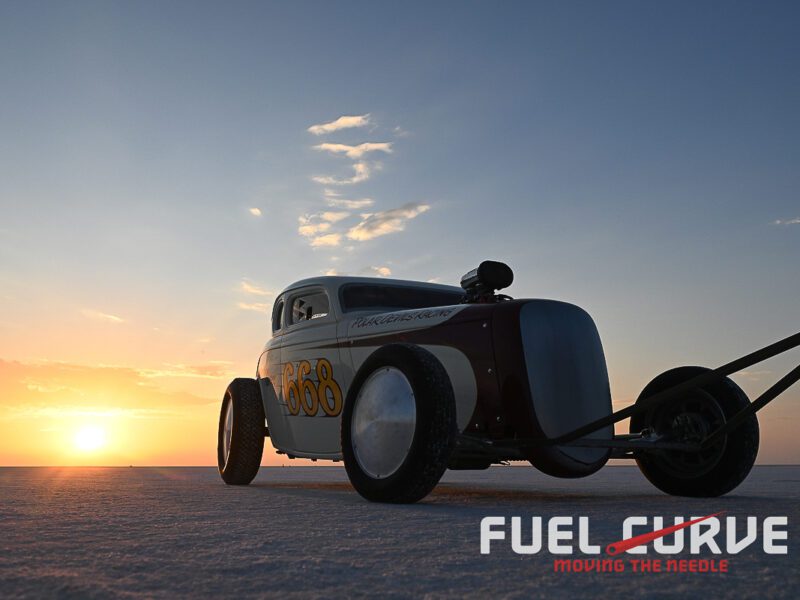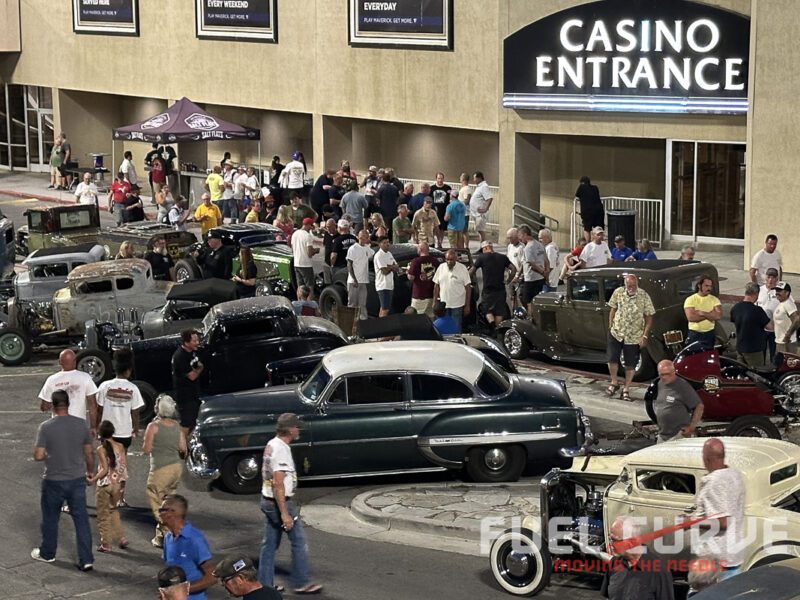George Poteet: A Hot Rod Life Well Lived
When George Poteet died July 16, the hot rodding world not only lost an incredibly active enthusiast, a prolific car collector, and a champion of land-speed racing. We also lost a tremendous advocate for our hobby and industry – a monumental force who influenced the course of hot rodding for the past three decades and left a legacy that is sure to affect it for years to come. Perhaps more importantly, our community lost a friend, mentor, and benefactor who inspired the lives of countless car builders, businesses, and enthusiasts.
The fact that someone who was an enthusiast and hobbyist – not a car builder, parts manufacturer, or event promotor – could have such a profound impact on our industry speaks volumes about the man George Poteet was. It’s hard to overstate his influence. His patronage put many car builders on the path to prominence. The cars he had built set trends and changed the course of build styles throughout the hobby. His involvement in land speed racing helped maintain interest in the sport, while also pushing the boundaries of its records.
To put it simply, Poteet lived the life many of us dream of living. Blessed by the prosperity that came to him from a career filled with hard work, good fortune, and smart business pursuits, Poteet was able to indulge in the things he loved. And one of the things he loved most was cars.
Humble Beginnings
Poteet was born in Mantachie, Mississippi, in 1948 and had a very humble upbringing as the son of a sharecropper and garment factory worker. He recounted to friends how he didn’t get to experience indoor plumbing until he graduated high school and went to Itawamba Community College – the first member of his family to pursue higher education. Prior to that, he was a standout athlete at Mantachie High School. He was also a hard worker who actually became a school bus driver at the tender age of 15!
Poteet would go on to work in the finance field and make his fortune at National Safety Associates and in the nutrition supplements business. He worked tirelessly and retired just a few years ago as an executive with Juice Plus NSA. He was happy to be able to send his son and three daughters to college, to support many charities alongside his wife, Cathy, and to support and nurture his 11 grandchildren and two great-grandchildren. Family and community were always central to Poteet’s life.
Right Man, Right Time
Many people in the hot rodding community first became aware of George Poteet in the mid-1990s, when he first began enjoying acclaim with a string of high-profile street rod and custom car builds. One of the first was a ’37 Ford roadster crafted by Don Pilkinton, which won the coveted Ridler Award in 1996. Needless to say, that helped put him on the map!
The ’37 was followed up with a build that truly reverberated through the hot rod world: The Sniper, built at Rad Rides by Troy. “He was my first paying customer,” says Troy Trepanier of Rad Rides. “George was the template for all my customers.”
The Sniper came about between Troy, who had some ideas for building a ’54 Plymouth with Viper power and Mercedes headlights, and Chip Foose, who did a quick sketch of those ideas. Trepanier shared the sketch with Poteet, who mentioned that he had learned to drive in a ’54 Plymouth. Poteet soon signed on for the project, which was built in a scant 13 months and gained national acclaim by being on the cover of Hot Rod Magazine and being driven on the Hot Rod Power Tour. It also became the Goodguys 1998 Custom Rod of the Year.
The Sniper project helped forge a strong relationship between Poteet and Rad Rides, one that would lead to many noteworthy builds over the next 25 years. More importantly, the acclaim and notoriety helped Trepanier build his business.
“I went out and found my own customers because of George,” Trepanier says. “He was so excited to see me have other customers. He paved the way for us to do well in this industry.”
Believing in Builders
Trepanier’s story is a familiar one among the many builders George worked with over the past quarter century. Writer and historian Pat Ganahl once nicknamed George the “Memphis Medici” because, much like the Medici family used its wealth to support famous Italian artists and cultural projects, Poteet was a patron to many car builders and helped them achieve greater acclaim by funding ambitious and innovative projects.
Dave Lane of FastLane Rod Shop was one of those builders. Lane had already gained some notoriety when Poteet commissioned him to build a ’32 Ford five-window coupe in 2002, a car that became the 2003 Goodguys Street Rod of the Year and cemented Lane’s reputation as a top-tier builder.
“He was all about seeing these things come to life and providing opportunities to people who needed a step up,” Lane says. “He provided the pathway, and what you chose to do with it was up to you. When you got done, you feel like you really accomplished something.”
Poteet was notoriously hands-off during most builds. He would pick a builder because he liked their style and would often tell them to build a vehicle like it was one of their own. On the five-window Deuce project, for example, he told Lane what interior color he wanted and that it needed a ’40 Ford steering wheel – that was it. “That gave you the direction,” Lane says. “Then he just said, ‘do your thing.’”
Jonathan Goolsby of Goolsby Customs noted that Poteet never stopped by the shop and rarely called during a build. “He was big on texting,” Goolsby says. “You felt good if you got a heart and a thumbs up.”
The hands-off strategy was successful, as many builds Poteet commissioned achieved the highest honors in hot rodding. There were multiple Goodguys Top 12 awards, the Ridler Award, an America’s Most Beautiful Roadster trophy, and scores of other accolades and honors. That said, people who knew him say Poteet was not a trophy chaser. He was happy with the recognition awards brought to the car builders and shops but did not seek that attention for himself. “So much of what he was doing wasn’t about him,” Lane says. “It never went to his head.”
A good example, Lane says, came during the financial crisis and recession that began in 2007. During that period, Lane estimates Poteet had 20 projects going at different shops around the country – cars he didn’t need, but that he kept in process to ensure those shops – and, by extension, many parts manufacturers – stayed in business.
“Instead of just handing people money, you’re providing people a career,” Lane says. “We don’t even know the number of people he was helping.”
Quiet Character
Anyone who ever met Poteet at a car show or as part of a road tour can attest to his unassuming personality. He commonly wore overalls or a plain T-shirt and had a Southern drawl that put people at ease. “Gracious and kind” are two of the words Trepanier uses to describe him.
“He was always polite to everybody,” Trepanier says. “The one thing he told me is, ‘let your actions speak louder than your words.’ That was George.”
Poteet’s actions spoke volumes. Whether he was supporting builders with projects, supporting manufacturers with his patronage, or supporting land speed racing with his participation (see sidebar for more on that), Poteet showed generosity through his actions.
Trepanier says that being at a car show or event with Poteet often involved a large group of people going out to dinner, with Poteet inevitably picking up the tab – and then some. “He’d strike up a conversation with the waiter or waitress,” Trepanier says. “He just enjoyed the company. He’d leave the servers an obnoxious tip. There’s a hundred of those stories of people who he did things for. He just felt obligated to help people.”
Drive ’Em
If there’s one constant in Poteet’s involvement in hot rodding through the years, it was his desire to enjoy the drive. He didn’t like trailer queens, as evidenced by him taking the Sniper on the Hot Rod Power Tour shortly after it was completed.
“Everything he ever owned, he wasn’t afraid to use,” Trepanier says. After winning Goodguys 2013 Street Machine of the Year with a Rad Rides-built ’69 Torino, Trepanier says Poteet then competed with it in the Optima Challenge and drove the car across the country twice.
Whether it was the Hot Rod Power Tour, the Goodguys Hall of Fame Road Tour, or almost any other road trip or caravan he could join, Poteet loved to travel in his hot rods and customs. In fact, the driving experience was so important to Poteet that many of his more recent builds were survivor-style cars and trucks – well-preserved original vehicles updated with modern chassis and engines. “I’ve won enough trophies in my life,” he told us in a 2020 interview. “I want a vehicle I can get in and drive like an everyday car. I don’t want to spend the rest of my life cleaning on a car.”
Lasting Legacy
In a social media post following Poteet’s death, Alan Johnson and his team at Johnson’s Hot Rod Shop asked, “how do you put into words the overwhelming contribution and influence one man had?” It’s nearly impossible. What’s obvious is that fact that George Poteet’s impact will be felt for many years to come through the cars he had built, the people he affected, and the connections he helped forge throughout the hot rod industry.
“I don’t believe there’s another guy like him who has helped as many shops as he did,” says Dave Lane. “I am really having a hard time believing he is gone.”
Trepanier sums it up succinctly: “He was top shelf, man, I’m telling you. Top shelf.”
“His biggest win of all was living a life driven to the absolute fullest,” Johnson says. “His love for the people, passion for innovation, and legendary influence toward the automotive industry is clear in everything he had his hands on. From setting world records to major automotive awards – nothing fueled his fire more than soaking up every moment with his family, putting on a pair of Carhartts, and enjoying the occasional pimento cheese sandwich. His generosity, smiles, and kind heart will forever be in our hearts.”
A Few Hot Rodding Highlights
Poteet loved road trips and joined Goodguys for a number of Hall of Fame Road Tours through the years. Clockwise from top left: Poteet in his Suburban in 2018; Poteet’s survivor-style ’56 Chevy built by Roadster Shop; Alan Johnson piloting the ’57 F100 his shop built for Poteet; Poteet in a ’62 Chevy wagon built by Roadster Shop, a project that helped Roadster Shop create its Ride Line chassis designed for smooth road touring.
Poteet’s GPT Special ’69 Torino Talladega built by Rad Rides blended the dash, hood, and other design traits of a Mercury Cyclone with a Holman Moody NASCAR-style Torino. The extensively modified and streamlined body was connected to a custom Art Morrison chassis rolling on Billet Specialties wheels, with power from a trick 750hp EFI Ford Boss 429. It went on to silver screen fame with a supporting role in Furious 7 after winning Goodguys Street Machine of the Year in 2013.
Johnson’s Hot Rod Shop finished this Deuce Tudor for Poteet in 2017 and took home the Goodguys Classic Instruments Street Rod of the Year title. It was built on a custom chassis with 16- and 18-inch magnesium wheels and a healthy 312c.i. Ford Y-block, and featured a chopped top, scores of subtle body mods under flawless black paint, and an incredible full-custom interior.
Poteet had Pinkee’s Rod Shop build the Three Penny Roadster, a ’36 Ford named for its color’s resemblance to the chocolate milk Poteet bought for three cents as a kid. The extensively modified body was supported by a custom chassis with one-off Curtis Speed wheels and a fuel-injected 351c.i. Ford small block, and there were many more hand-crafted elements inside. It won America’s Most Beautiful Roadster at the 2019 Grand National Roadster Show, in addition to the Goodguys America’s Most Beautiful Street Rod title.
Poteet got interested in survivor-style builds in recent years, in part because of the quicker construction time and focus on drivability. Roadster Shop built this ’57 Ford with a custom frame, a GM LS3 dressed up like a vintage Ford 390, 18-inch Forgeline wheels, and many one-off trim and detail pieces to keep the old-school feel.
Goolsby Customs finished this ’60 Impala for Poteet in 2021, treating it to a Roadster Shop chassis, LS3 engine, Bowler-built 4L70E transmission, and one-off Billet Specialties wheels modeled after early-’60s Corvette hubcaps – proven components with a goal of reliable road tripping.
Success on the Salt
George Poteet’s impact on land speed racing and the Bonneville Salt Flats is every bit as significant as the one he had on street rods and custom cars. His good friend Gray Baskerville from Hot Rod Magazine first lured him to the salt, and by the early-2000s Poteet was making the annual trek and starting to run his own cars. He began with a Flathead-powered roadster that got him past the 100mph mark and earned him his license, and he just kept getting faster from there.
Poteet collaborated with Rad Rides to build the Blowfish Barracuda in 2006, which went on to set an F/Blown Fuel Competition Coupe record that still stands. He later graduated to the Speed Demon streamliner, where he would achieve faster speeds, break more records, and shine an even brighter spotlight on Bonneville.
George Poteet ultimately made more than 55 passes at more than 400mph – more than any other human on earth. In August 2020, Poteet set a new land speed record of 470.015mph in the Speed Demon and recorded a 481.576mph pass that made the streamliner the World’s Fastest Piston Engine/Wheel Driven car. The Speed Demon has won the Hot Rod Trophy as the fastest car of the SCTA Speed Week an unprecedented 12 times, the most recent being this year, just a few weeks after Poteet’s death.
Godspeed George and thank you –

